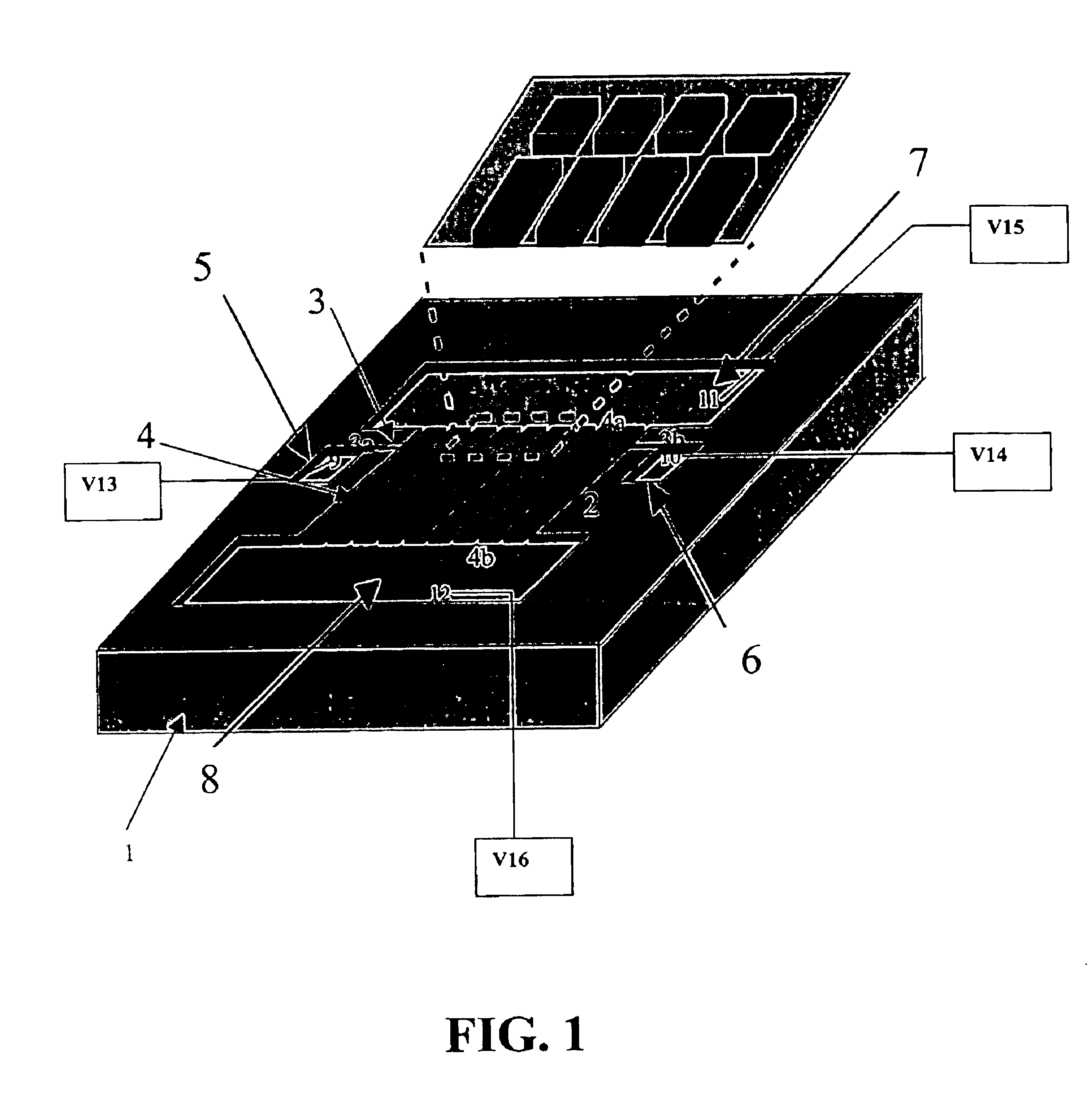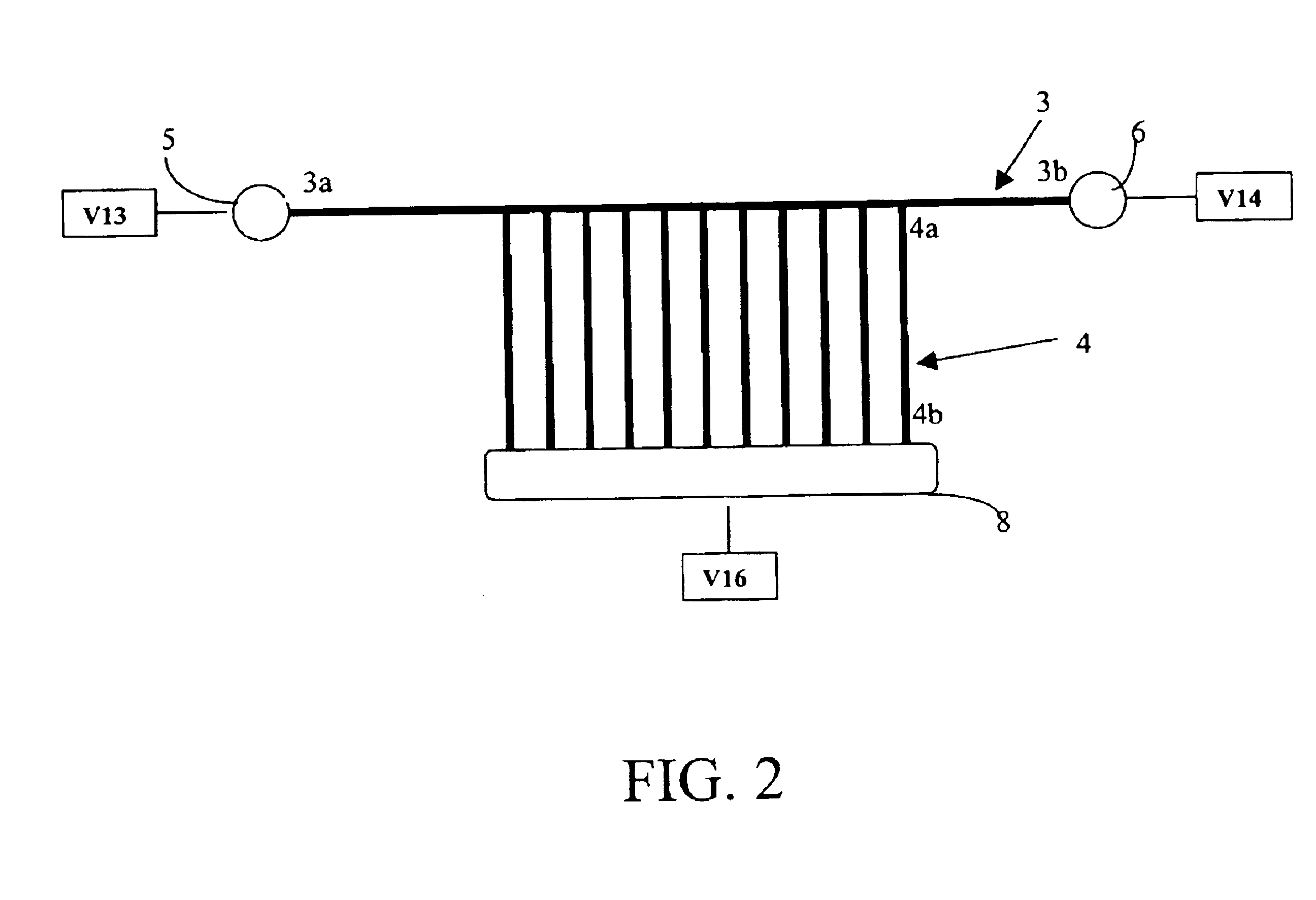Plastic microfluidics enabling two-dimensional protein separations in proteome analysis
a microfluidic and proteome technology, applied in the field of microfluidic equipment, can solve the problems of inability to detect protein separation in microchannels, time-consuming tasks prone to irreproducibility and poor quantitative accuracy, and lack of methods to introduce different separation media into different dimensions in the same unit, etc., to achieve high resolution detection of proteins, low florescence, and simple procedures
- Summary
- Abstract
- Description
- Claims
- Application Information
AI Technical Summary
Benefits of technology
Problems solved by technology
Method used
Image
Examples
Embodiment Construction
[0028]According to one embodiment of the invention as illustrated in FIG. 1, for example, a microfluidic 2-D gel electrophoresis apparatus is provided. Microfluidic 2-D gel electrophoresis apparatus may comprise a first planar substrate 1 containing one or more first-dimension microchannels 3 for first dimension separation, as well as a second planar substrate 2 (bonded to first planar substrate 1) to provide enclosure for one or more second-dimension microchannels 4 for second dimension separation.
[0029]According to one embodiment, the first-dimension microchannel 3 may extend in a first direction, while an array of one or more second-dimension microchannels 4 may extend from, or intersect with, the first-dimension microchannel 3 in a second direction. Preferably the second direction is orthogonal to the first direction. The first-dimension microchannel 3 may have a first end 3a and a second end 3b. Similarly, an array of one or more second-dimension microchannels 4 may each have a...
PUM
| Property | Measurement | Unit |
|---|---|---|
| inner width | aaaaa | aaaaa |
| inner width | aaaaa | aaaaa |
| inner width | aaaaa | aaaaa |
Abstract
Description
Claims
Application Information
 Login to View More
Login to View More - R&D
- Intellectual Property
- Life Sciences
- Materials
- Tech Scout
- Unparalleled Data Quality
- Higher Quality Content
- 60% Fewer Hallucinations
Browse by: Latest US Patents, China's latest patents, Technical Efficacy Thesaurus, Application Domain, Technology Topic, Popular Technical Reports.
© 2025 PatSnap. All rights reserved.Legal|Privacy policy|Modern Slavery Act Transparency Statement|Sitemap|About US| Contact US: help@patsnap.com



